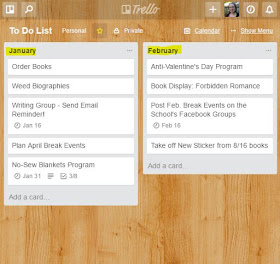Welcome to our series, "Ready to Go!" Book Display. Once a month we'll highlight the latest or greatest for every age group that you can promote within your library or order for your collection. This month double the fun with books with twins.
Books for Adults:
Chang and Eng by Darin Strauss (June 2000)
A fictional retelling of the lives of Chang and Eng Bunker - the original "Siamese twins" - from their lives of poverty in Siam to their success in the United States.
Twenty-five years after identical twins Helen and Ellie switch identities, Helen receives a call that her sister is in a coma after an accident, a situation that forces Helen to confront her personal demons.
When the strongest earthquake in U.S. history occurs just north of their St. Louis home, Kate and Jeremy find the disaster futher complicated by Kate's self-proclaimed-medium twin's prediction about a more powerful earthquake, a situation that places Kate under public scrutiny and reveals her own psychic abilities.
Bittersweet by Colleen McCullough (Jun 2013)
Because they are two sets of twins, the four Latimer sisters are as close as can be. Yet each of these vivacious young women has her own dream for herself.
Will & I by Clay Byars (Jun 2016)
Twins Clay and Will Byars have different lives after Clay is in a traffic accident and suffers a stroke.
A story told entirely in uproarious emails follows the misadventures of fraternal twins Harry and Matilda, who fumble their way into adulthood by telling lies and keeping secrets before eventually confronting the dynamics of their complicated twinship.
Books for Teens:
Gemini by Sonya Mukherjee (June 2016)
In a small town, as high school graduation approaches, two conjoined sisters must weigh the importance of their dreams as individuals against the risk inherent in the surgery that has the potential to separate them forever.
Fangirl by Rainbow Rowell (Sept 2013)
Being consummate fans of the Simon Snow series helped Cath and her twin sister, Wren, cope as little girls whose mother left them, but now, as they start college but not as roommates, Cath fears she is unready to live without Wren holding her hand - and without her passion for Snow.
I'll Give You the Sun by Jandy Nelson (Sept 2014)
A story of first love, family, loss, and betrayal told from different points in time, and in separate voices, by artists Jude and her twin brother Noah.
One by Sarah Crossan (Sept 2015)
Despite problems at home, sixteen-year-old conjoined twins Tippi and Grace are loving going to school for the first time and making real friends when they learn that a cardiac problem will force them to have separation surgery, which they have never before considered.
Twins Nikki and Maya Younger always agreed on most things, but as they head into their senior year they react differently to the gentrification of their Portland, Oregon neighborhood and the new - white - family that moves in after their best friend and mother are evicted.
For This Life Only by Stacey Kade (Aug 2016)
A young man struggles to move forward after the death of his twin brother in this contemporary novel about loss, redemption, and love.
Twin sisters, one living in the Shadow Lands - the realm of the dead - and one in the land of the living, are called upon to try and save a boy and his friends who have been marked for death by a long-dead serial killer.
In alternating chapters, sixteen-year-old twins Ysabel and Justin share their conflicted feelings as they struggle to come to terms with their father's decision to become a woman.
Books for Children:
After her troublemaking twin, Scarlet, vanishes from Rookwood boarding school, shy Ivy tries to track her down, using pieces of Scarlet's journal carefully hidden all over the school for Ivy to find.
Fourteen-year-old twin basketball stars Josh and Jordan wrestle with highs and lows on and off the court as their father ignores his declining health.
Ling and Ting are identical twins that people think are exactly the same, but time and again they prove to be different.
Twins Violet and Victor write a fairy tale together, with Violet contributing a castle, a princess, and unicorns and Victor adding a fairy tale-hating witch and a bevy of Australian animals. Get more of these twins in the first book: Violet and Victor Write the Best-Ever Bookworm Book.
Twins Sydney and Simon learn about the water cycle and use science, technology, engineering, arts and math to solve the problem of their stuck window and thirsty flowers.
Lysander Singleton tries his best to fit in at Twin Oaks Elementary, where all students are twins except him, but on the day of the Twindividuation contest his experience as an only child gives him a competitive edge.









